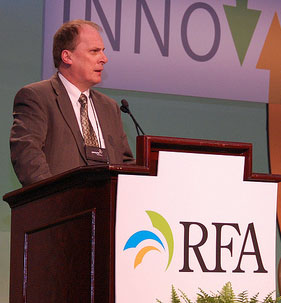Automakers will need higher octane fuels to meet the coming increases in fuel economy and reductions in emissions called for by 2025 and ethanol is positioned to help fill that need.
According to a new study by auto engineering firm Ricardo, Inc., the increase in average fleet fuel economy to 54.5 mile per by 2025 will have to be met in large part by engines and vehicles popular today, which is about double the average of 2010. Ricardo notes, “[t]he vast majority of vehicles sold through 2025 in the United States will use gasoline-fueled, spark-ignited internal combustion engines as the primary form of propulsion.”
Specifically, Ricardo reports that nearly 3 out of every 4 vehicles will require a gasoline-type, higher octane fuel to operate a growing list of engine technology options. “Future powertrain solutions will have a natural thirst for higher octane fuels,” Ricardo concludes. Octane is the standard measure of the anti-knock properties (i.e., engine performance) of a motor fuel. Most fuels today, including E10 ethanol blends, have an octane rating of at least 87.
 Speaking at the 17th annual National Ethanol Conference, Ricardo project director Rod Beazley said the meeting should be called the “National Octane Conference” because “ethanol has sort of a bad rap with the autos and it might need to re-market itself.”
Speaking at the 17th annual National Ethanol Conference, Ricardo project director Rod Beazley said the meeting should be called the “National Octane Conference” because “ethanol has sort of a bad rap with the autos and it might need to re-market itself.”
Beaszley says he doesn’t agree with the timing of the Renewable Fuel Standard (RFS). “If I was king for the day, you’d be getting the 36 billion gallons by 2017,” he said. “That would be the challenge – how to accelerate it by five years.”
He called for an alliance with auto makers who have a tremendous challenge ahead of them to increase fuel economy. “I think there’s a huge opportunity for the renewable fuels industry to grow and to have a very strong partnership with the autos,” he said. “There’s never been a better time for the industry than now.”
Listen to or download Beazley from NEC here: Ricardo Inc. Project Manager Ron Beazley

